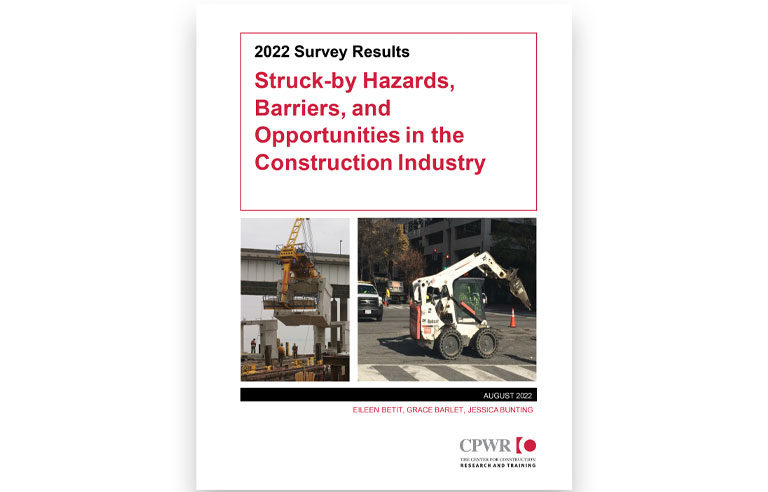Construction industry survey finds lack of training on preventing struck-bys

Source: CPWR – The Center for Construction Research and Training
Silver Spring, MD — Nearly 4 out of 5 construction employers, supervisors and workers say their organization needs training on identifying and preventing struck-by hazards, according to the results of a recent survey conducted by CPWR – The Center for Construction Research and Training.
Researchers surveyed 208 individuals, 88% of whom have more than 10 years of experience in the construction industry. Most respondents – 77.9% and 72.7%, respectively – believe their organization needs to institute training to identify and prevent struck-by hazards, as well as conduct job hazard analyses before work or new tasks begin.
Further, the results show that the leading causes of struck-by injuries are working around heavy equipment or vehicles (35.6%) and falling or flying objects from work performed at height (29.8%). The employers identified three primary barriers to engaging in practices to prevent struck-by injuries: lack of understanding or information to address hazards (26.9%), scheduling pressure (25.5%), and lack of training in hazard identification and prevention (23.1%).
“Developing a training program for those involved in the planning process, which covers struck-by hazard identification, how to conduct job hazard analyses and best practices for prevention, would address the biggest barriers and support more effective planning and decision-making,” CPWR says.
Still, “filling knowledge and training gaps does not guarantee that companies and their employees will engage in safe practices,” CPWR cautions. The organization says the results show that employees with stop-work authority often enforce safe practices, and suggests “further exploration of stop-work authority’s use in the construction industry and how it could be used to reduce struck-by incidents may be warranted.”
Post a comment to this article
Safety+Health welcomes comments that promote respectful dialogue. Please stay on topic. Comments that contain personal attacks, profanity or abusive language – or those aggressively promoting products or services – will be removed. We reserve the right to determine which comments violate our comment policy. (Anonymous comments are welcome; merely skip the “name” field in the comment box. An email address is required but will not be included with your comment.)

